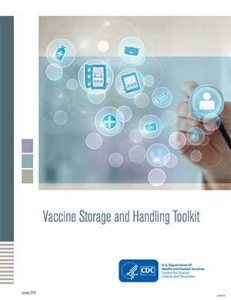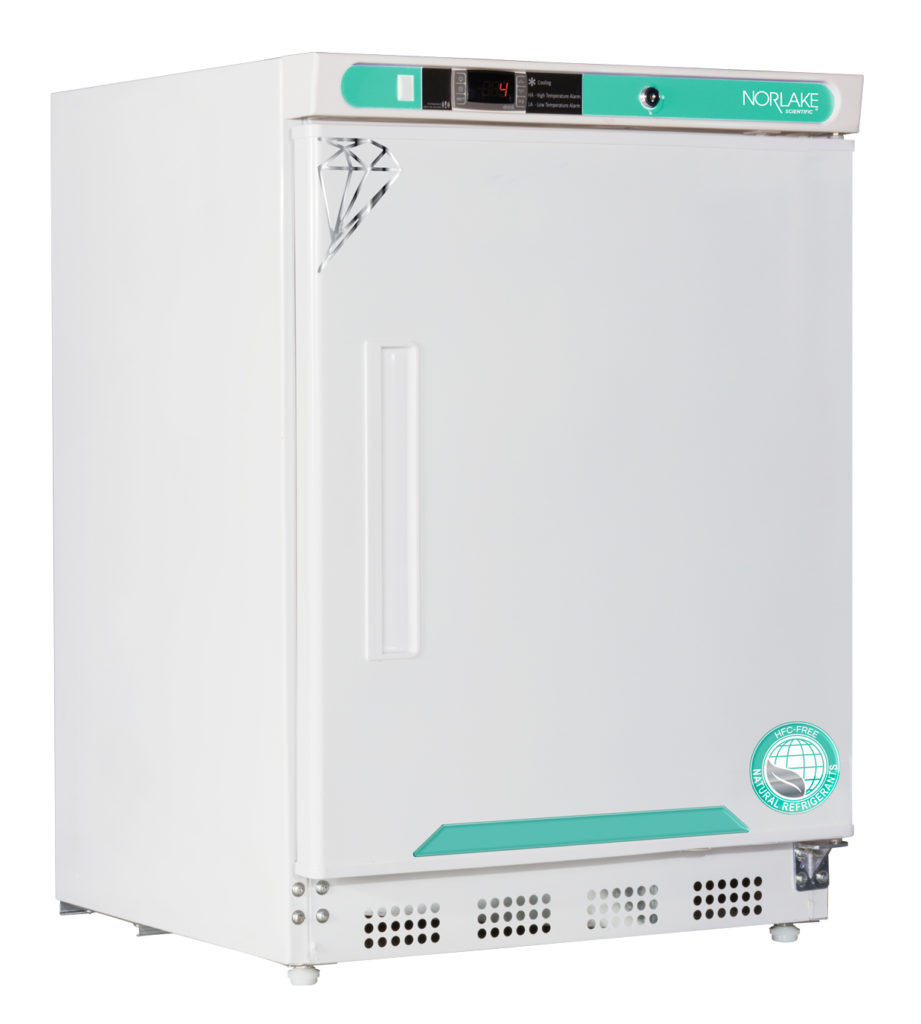
Vaccine Storage Guidelines 2024
Medical practitioners preparing for the 2024-25 flu season should review CDC’s 2024 Vaccine Storage and Handling Resources to be assured they are in compliance with vaccine storage guidelines that “help protect your patients, safeguard your vaccine supply, and avoid the unnecessary costs of revaccinating patients and replacing expensive vaccines.”
These vaccine storage guidelines are a critical factor for medical practitioners participating in the CDC’s Vaccine for Children (VFC) program.
That’s because administering the vaccine represents the end of the CDC’s “Vaccine Cold Chain” that begins with the manufacturer.
Vaccine manufacturers set the storage temperatures for their products. Refrigerated vaccines must be transported and stored within the temperature range of 35°F (2°C) to 45°F (8°C). Other vaccines may require storage at lower temperatures.
Critical Refrigeration Criteria for Vaccine Storage
Critical refrigeration criteria for vaccine storage applies to any refrigeration system employed by medical practitioners, regardless of their vaccine inventory. Section Four of the CDC’s 2024 vaccine storage guidelines toolkit provides suggestions on vaccine inventory management.
Vaccine Refrigeration Temperature Alarming Systems
This is a key point to CDC vaccine storage guidelines.
Local power outages or brownouts, mechanical failure of refrigeration equipment, doors left open too long or accidently left ajar, or the unit becoming unplugged are common causes of temperature excursions.
Here are some requirements for temperature alarming systems. Some of these are standard on vaccine refrigeration equipment while others can be added to bring vaccine storage units into compliance.
Interior temperature monitoring is accomplished with product temperature sensors. Inserted in a bottle of glycerin or glycol these sensors mimic the temperature of refrigerated vaccines vs. internal air temperature.
Why is this? Since the variation in vaccine temperature is the important factor, the product sensors avoid unnecessary temperature alarms set off by routine door openings. Sensors may be used to record product temperature in two areas of the unit as well as internal air temperature.
Temperature controls range from simple dial-type thermostats with letters or numbers (cold, colder, coldest). A better method is a highly sophisticated digital microprocessor temperature controller that displays internal temperatures on an external LED.
Premium vaccine storage refrigeration systems use the more precise microprocessor temperature controls. This is the best choice to maintain the absolute minimum temperature drift. High-end models also allow setting temperatures to one decimal place.
Temperature alarming is an absolutely critical feature when storing vaccines and is standard on many models of CDC-compliant vaccine refrigeration equipment.
These are built-in digital audio and visual high/low temperature alarms, some with remote alarm contacts that can be connected to alert personnel elsewhere in the facility.
Otherwise compliant vaccine refrigeration equipment can be fitted with optional digital temperature alarms. These consist of internal sensors placed in bottles as described above. They are connected to an external control and display module.
Power outages are a separate concern. If your medical facility is not equipped with backup generators you should have in place detailed procedures to quickly move vaccine stock to an alternate location.
Monitoring and Record Keeping
Vaccine storage temperature sensors collect data within the units for validation purposes. Procedures for monitoring and accessing data vary based on the system.
Built-in or free-standing temperature chart recorders can be used to collect temperature data 24/7 in hard copy form for storage and retrieval as needed.
More recently temperature chart recorders are being superseded by digital data loggers. When constructed to CDC requirements data loggers record the vaccine refrigeration unit’s internal temperature at the CDC required 15-minute minimum intervals, activate sound and visual alarms, and record the alarm duration. Data are downloaded from the digital recorder to a USB stick to be transferred to a PC for paperless record keeping.
An example of a data logger available from Tovatech is the Corepoint Scientific USB Digital Data Logger with its detachable single or dual temperature probe in a glycol-filled bottle. It meets or exceeds current CDC-compliant vaccine storage and monitoring systems and comes with multi-point calibration on an individually-numbered Traceable Certificate which assures accuracy from an accredited ISO/IEC 17025:2005 (1750.01) calibration laboratory.
Whatever equipment is used to record temperatures keep in mind that the CDC recommends twice daily manual reviewing and recording temperatures displayed for the unit. The minimum and maximum temperatures since the previous reading should also be noted to determine if temperatures are out of range.
A CDC Compliant Vaccine Storage Refrigerator for Small Medical Practices
Tovatech offers a variety of CDC-complaint vaccine storage units for large and small medical practices.
As an example for practices with limited floor space is the space-saving undercounter 4.6 cubic foot 3- shelf PR051WWW/0 unit.
Advantages of built-in undercounter units include front-breathing ventilation system, eliminating the need for clearance around the top and sides of the unit; enabling the user to incorporate these units into cabinets and other applications where space is limited. Models are UL/C-UL Listed, include a full 3-year comprehensive warranty, and utilize environmentally friendly, natural, Hydrocarbon (HC) refrigerants.
The PR051WWW/0 along with other Tovatech-offered vaccine storage guideline-compliant vaccine storage refrigerators meet other CDC Vaccine Storage Guidelines including:
- Microprocessor temperature controller
- Digital temperature display
- Audible and visual high and low temperature alarms
- Remote alarm contacts
- 2 probes; 1 in air and 1 in glycol bottle
- Adjustable operating temperature range: 1°C to 10°C
- Back wall evaporator cover
- Forced draft circulation
- Keyed door lock
- Magnetic door gasket for positive seal
- Leveling legs
- Probe access port (3/8″)
Need More Info on CDC Compliant Vaccine Storage?
We hope the information in this post is useful when specifying a vaccine storage refrigerator for your healthcare facility. For additional information and recommendations on selecting equipment please call the vaccine storage professionals at Tovatech for expert advice on the right model for your clinic.

